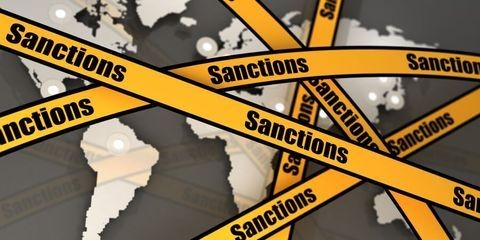Landmark EU Court Judgment on the Notification Requirements for Substances of Very High Concern
Client Alert | 3 min read | 10.02.15
The 2006 European Regulation on the Registration, Evaluation, Authorization, and Restriction of Chemicals (REACH) imposes requirements on the use of chemicals in the European Union (EU) to improve the protection of human health and the environment.
In March, we informed you that a French Court had asked the European Court of Justice (ECJ) to clarify whether the REACH requirement for producers and importers to notify the European Chemicals Agency (ECHA) about Substances of Very High Concern (SVHCs) applies only to finished articles or also to all individual components that meet REACH's "article" definition: "an object which during production is given a special shape, surface, or design which determines its function to a greater degree than its chemical composition." SVHCs are chemical substances that appear on ECHA's Candidate List and that can only be used in the EU in compliance with REACH. To date, ECHA has identified 163 SVHCs, including, for example, cadmium, and arsenic acid.
ECHA's 2011 guidance on SVHCs supported the view that the REACH notification requirement only applies to finished articles, a view also supported by the European Commission, Greece, and Ireland in the ECJ. Other Member States, such as France and Germany, supported the opposite view that the notification requirement applies to all individual components that meet the "article" definition, a view supported by the ECJ's Advocate-General in her non-binding opinion on February 12, 2015.
On September 10, 2015, the ECJ followed the Advocate-General's opinion and ruled that REACH applies broadly and thus that companies must notify ECHA if SVHCs are present above a concentration of 0.1 percent by weight in finished products or in component parts that meet the "article" definition. The European Commission indicated to Bloomberg that it "acknowledges the ECJ ruling and will analyze it in detail, working with ECHA and Member States to implement the judgment and consider the revision of guidance."
The ECJ's ruling has potentially very costly implications for EU producers and importers of components that contain reportable levels of SVHCs. In particular, these companies will need to determine whether additional REACH compliance steps are required for components that they have already produced and delivered to customers. Similarly, producers of finished articles will need to consider the extent to which individual components of their finished products trigger additional REACH notification requirements.
Other Articles in This Month's Edition:
- California Changes Its 'Made in the USA' Labeling Standard
- Back to the Future: Manufacturers' Warranties May Go Digital with Updates to the Magnuson-Moss Warranty Act
- FDA's Menu Nutrition Labeling Rule May Have the Unintended Consequence of Preserving the Status Quo
- R-E-V-E-R-S-A-L Spells Reversal! The Sixth Circuit Holds Varsity Brands' Cheerleading Uniform Designs to be Copyrightable
- Landmark EU Court Judgment on the Notification Requirements for Substances of Very High Concern
- Identifying Endocrine Disruptors in the European Union
- Advertisers in the Ring – A Roundup of This Month's Competitor Advertising Challenges: the Importance of Syncing Test Results to Claims
Contacts
Insights
Client Alert | 14 min read | 05.03.24
On April 24, 2024, President Biden signed into law the National Security Supplemental fiscal package, which includes significant new sanctions and export controls authorities. Although the U.S. foreign aid commitments for Ukraine, Israel, and Taiwan headline the new law, it also (1) expands the statute of limitations for U.S. sanctions violations; (2) includes new authorities for the President to coordinate sanctions efforts with the European Union and the United Kingdom; (3) expands sanctions and export controls on Iran (including some targeted at Chinese financial institutions); and (4) includes new sanctions authorities targeting terror groups.
Client Alert | 3 min read | 05.03.24
EEOC’s New “Enforcement Guidance on Harassment in the Workplace” Hits Hot-Button Issues
Client Alert | 11 min read | 05.03.24
FDA Moves Forward on Laboratory Developed Tests while Stakeholders and Congress Weigh Next Steps
Client Alert | 1 min read | 05.03.24



